Gold prices have surged in recent months amid the uncertainty surrounding the Covid-19 pandemic and enormous monetary stimulus measures, and precious metals companies have seen their valuations benefit. Below, we provide an overview of eight industry players with exposure to gold.
Caldas Gold
Caldas Gold (TSXV: CGC) holds the producing Marmato gold-silver project in Colombia, as well as the Juby project in Ontario, 15 km from Gowganda.
The Marmato mining assets include an underground mine, with additional Deep zone mineralization below existing mine workings, and a 1,200-tonne-per-day processing plant.
In July, Caldas released the results of a prefeasibility study on an expansion of Marmato, which defined a 14-year operation, producing an average of 165,40 oz. gold between 2024 and 2033, at all-in sustaining costs (AISCs) of US$872 per oz. over the life of mine. With an initial capital cost estimate of US$269.4 million, the after-tax net present value estimate stands at US$263.9 million, at a 5% discount rate.
Over the past year, Caldas has updated its mine plan for the Upper portion of Marmato, to incorporate an expansion to 1,500-tonnes-per-day, from 1,200 tonnes per day, over the next two years at a capital cost of $10.7 million. This is expected to grow production from the Upper mine to approximately 50,000 oz. per year by 2021.
In the first half of the year, Marmato generated 9,752 oz. gold at AISCs of US$1,571 per ounce.
In June, Caldas signed a non-binding term sheet with Wheaton Precious Metals (TSX: WPM; NYSE: WPM), for total consideration of US$110 million, based on a precious metals purchase agreement. Proceeds would be used to fund an expansion of Marmato. Wheaton would purchase 6.5% of the gold output and 100% of the silver, until it has received 190,000 oz. gold and 2.15 million oz. silver. The stream would then drop to 3.25% of gold production and 50% of silver output over the life of mine.
In July, Caldas closed a $50-million bought deal private placement of warrants. Each warrant allows the holder to receive a Caldas unit, which consists of one share and one warrant.
Caldas Gold has a $186-million market capitalization.
Chesapeake Gold
Chesapeake Gold (TSXV: CKG) holds the Metates project in Mexico’s Durango state, which, according to Chesapeake, is one of the world’s largest undeveloped gold-silver-zinc deposits.
The 147-sq.-km Metates property hosts two zones of mineralization: the Main and North zones, with total mineral reserves of 1.1 billion tonnes grading 0.52 gram gold per tonne, 14.2 grams silver per tonne and 0.16% zinc (0.76 gram gold-equivalent), host to a total of 18.3 million oz. gold, 501.6 million oz. silver and 4 billion lb. zinc.
In 2013, Chesapeake published the results of a prefeasibility study on Metates, which suggest a 120,000-tonne-per-day open pit operation, producing a bulk sulphide concentrate, which would then be transported downhill for processing through a pipeline. The sulphides would then be oxidized in an autoclave circuit with the gold and silver recovered through cyanidation. Zinc would be extracted from the pressure oxidation solution to generate ingots.
By 2016, the company tabled an updated prefeasibility, featuring an initial 30,000-tonne-per-day mine, and ramping up to 90,000 tonnes per day within four to five years. According to Chesapeake, the expansion would be largely funded by cash flow from operations.
The updated study outlines a 37-year operation, producing an average of 519,000 oz. gold, 9 million oz. silver and 83 million lb. zinc per year, during 25 years of active mining. With an initial capital cost of US$1.9 billion, and based on US$1,350 per oz. gold, US$20 per oz. silver and US$1 per lb. zinc, and AISCs of US$662 per gold oz., the after-tax net present value estimate stands at US$1.9 billion, at a 5% discount rate.
Chesapeake’s holdings in Mexico also include the Nicole, San Javier, Yarely and El Paso properties.
In the U.S., Chesapeake holds a 75% interest in the Talapoosa project in Nevada, 45 km east of Reno, through a 75% stake in Gunpoint Exploration (TSXV: GUN), the property owner.
In August, Chesapeake closed a US$20-million private placement to fund metallurgical test work on Metates, as well as for regional exploration.
Chesapeake Gold has a $359-million market capitalization.
Enduro Metals
Enduro Metals (TSXV: ENDR) is focused on advancing the Newmont Lake project in the centre of British Columbia’s Golden Triangle.
The wholly owned portion of Newmont Lake covers 182 square kilometres. Last year, Enduro finalized an option agreement with Romios Gold Resources (TSXV: RG) to acquire a 100% interest in a further 436 sq. km, for a total land package of 618 square kilometres.
The option agreement includes $8 million in exploration spending (completed this spring), as well as $2 million in cash payments (of which $1 million is still payable by February 2022) and the issue of 12 million shares (8 million are still due by February 2022).
Newmont Lake is made up of four areas, classified according to their geological potential. Ground around the 20-km long McLymont fault is prospective for gold, copper and silver, with several high-grade gold occurrences. The Cuba area hosts potential for silver, gold, zinc, lead and copper mineralization associated with the McGillivray Fault, which extends over 30 kilometres. The Chachi Corridor portion of Newmont Lake features a multi-element hydrothermal system associated with the McGillivray Fault, which is also over 30 km long. Lastly, the Burgundy trend area features an alkalic copper-gold porphyry system.
Known gold zones at the 70-sq.-km McLymont area include NW Extension, Goldfish and Apple. In September 2019, Enduro released assays of a discovery hole, which hit the interpreted extension of the historic NW zone, dubbed the NE Extension area. The hole returned 188 metres of 1.1 grams gold, 1.15 grams silver and 0.09% copper starting at 67 metres. The company identified three styles of gold mineralization in the drill hole: skarn, epithermal, and porphyry, which refined its geological interpretation of the area as a high-grade, near-surface gold skarn deposit, with the gold transported in epithermal feeder veins with a hypothetical porphyry source at depth.
In July, Enduro also released assay results for a drill hole completed by Romios into the NW zone, which returned 144 metres of 3.18 grams gold and 3.66 grams silver starting at a depth of 10 metres.
Ongoing modelling around the McLymont Fault has defined additional gold targets, with potential for a high-grade gold deposit along the 1,500-metre horizon extending from the NW Zone and NE Extension areas through to the Goldfish zone.
In August, the company closed an $11.18-million private placement and started a 6,000-metre diamond drill program along the McLymont Fault.
Enduro Metals has a $52.3-million market capitalization.
Golden Arrow Resources
Golden Arrow Resources (TSXV: GRG) is focused on identifying and advancing mineral discoveries in South America. The company aims to sell these properties for cash, or cash and a production royalty.
The explorer is part of the Grosso group of companies, whose management has been active in the Argentinean exploration space since 1993.
Amongst its 1,800 sq. km of wholly owned ground in Argentina, Golden Arrow’s focus is on the road-accessible 140-sq.-km Flecha del Oro epithermal gold project in Rio Negro province, 22 km from the town of Los Menucos. The site includes 120 sq. km of mineral rights, and lies within the Somuncara Massif, an area with known epithermal gold mineralization. Golden Arrow’s due diligence chip sampling on the property returned 5 metres of 13.1 grams gold and 0.2 metre of 11.2 grams gold from two parallel veins within the Esperanza target. The veins are located 600 metres apart.
In June, Golden Arrow announced mapping and sampling results from Flecha del Oro. A high-grade gold target from the Esperanza area returned up to 24.4 grams gold and 13.6 grams silver from a float boulder sample and 5.23 grams gold and 32.3 grams silver over 0.3 metre from a vein chip sample.
In August, the company started a 500-metre diamond drill program at the Tierra Dorada project in Paraguay, which covers 640 square kilometres. The work will be focused on the Alvaro target, where prior surface and trench sampling returned high-grade gold. Results include up to 47.4 grams gold from boulder and vein samples and 89.5 grams gold and 61 grams silver over 0.9 metre from a trench.
In July, Golden Arrow acquired, through staking, the Rosales copper project in Chile. The 14.5-sq.-km, road-accessible site includes a number of target areas with near-surface copper stockwork mineralization.
Golden Arrow previously advanced the Chinchillas project in Argentina, and, by May 2017, formed the Puna operations joint venture (which combined Chinchillas with the Pirquitas operation) with SSR Mining (TSX: SSRM; NASDAQ: SSRM), in which Golden Arrow held a 25% stake. The junior ultimately sold its share in the joint venture to SSR Mining in September 2019 for $3 million in cash and 1.2 million shares of SSR.
Golden Arrow Resources has a $23.2-million market capitalization.
Lion One Metals
Lion One Metals (TSXV: LIO) is working to develop a starter gold operation at the wholly owned Tuvatu project in Fiji, 24 km northeast of the town of Nadi. The Tuvatu project is on the Viti Levu island and hosts a 7-km diameter alkaline gold system.
The existing Tuvatu deposit lies within a 3.9-sq.-km special mining lease, while the larger project area is covered by 136 sq. km of special prospecting licenses. In 2015, Lion One secured a 10-year renewable mining lease, which allows for development, mining and processing within the lease area. Lion One is evaluating potential pilot plant and starter gold mine configurations. Bulk earthworks are nearly complete.
Mineral resources at Tuvatu consist of 1.1 million indicated tonnes, at 8.17 grams gold per tonne, containing 294,000 oz. gold, with an additional 1.3 million tonnes, at 10.6 grams gold per tonne, for a further 445,000 oz. gold. There are a total of 30 gold anomalies, returning over 5 grams gold, identified over 7 km of strike at the project. Lion One’s interpretation of the alkaline gold model suggests multi-million-ounce potential.
Lion One acquired Tuvatu in 2011. Over 100,000 meters have been drilled at the site to date, which also features 1,600 metres of underground development.
A preliminary economic assessment (PEA) completed in 2015 outlines a 7.4-year underground operation, producing an average of 57,320 oz. gold per year, at AISCs of US$779 per ounce. With an initial capital outlay of US$48.6 milion, and a 15-month preproduction period, the after-tax net present value estimate stands at US$86.5 million, at a 5% discount rate, and based on a US$1,200 per oz. gold price.
In August, the company reported diamond drill results from Tuvatu. The mineralization, according to Lion One, “displays characteristics typical of feeder style mineralization in alkaline gold systems.” The drill hole returned 2 metres of 35.28 grams gold starting at 558 metres, as well as 13 metres of 46.14 grams gold from 571 metres. The hole was drilled down to a depth of 641 metres.
Lion One also announced high-grade gold mineralization from a wedge hole, drilled to a depth of 709 metres, which returned 3 metres of 70 grams gold, and an additional wedge hole is now underway. These intercepts are aimed at high-grade lode, as Lion One works to establish its orientation.
In August, the company raised $39.8-million through a bought deal and concurrent private placement.
Lion One Metals has a $267.2-million market capitalization.
Rupert Resources
Rupert Resources (TSXV: RUP) is an exploration company targeting large, high-potential return deposits in Finland, Ontario’s Red Lake district and British Columbia.
In Finland, Rupert’s flagship property is the 325-sq.-km Pahtavaara project, within the Central Lapland greenstone belt. The site was first discovered in 1986. Since then, over 300,000 metres of drilling has been completed on the 4-sq.-km mining license within Pahtavaara, and 450,000 oz. gold has been mined. Rupert acquired the project in 2016.
The site features a 20-km-long prospective structural corridor, with a 2018 resource estimate of 4.6 million inferred tonnes at 3.2 grams gold per tonne, for a total of 474,000 oz. gold. The past-producing site hosts a 500,000-tonne-per-year permitted mill, in addition to 35 km of underground development with ramp access and is permitted for a potential tailings facility.
Additional exploration targets at the site include the Ikkari, Hirvi, Heina C and Saitta zones. Over the last year, Rupert has discovered six new areas of gold mineralization within the Area 1 licence package at Pahtavaara. These include the Heina zones, as well as Island, Saitta and Ikkari.
In August, Rupert reported drill results from Ikkari, with highlight intercepts of 31 metres of 2.1 grams gold from 53 metres downhole, as well as 71 metres of 2 grams gold from surface and 131 metres of 1.2 gram gold from 166 metres downhole. Ikkari remains open.
June’s drill highlights from the Heina South area include 10 metres of 5.2 grams gold starting at 39 metres and 12 metres of 2.2 grams gold from 83 metres downhole. Heina South mineralization has been defined over at least 400 metres of strike and widths of up to 20 metres.
In July, Rupert raised $25.6-million through equity financings for ongoing exploration work in Finland.
In February, Agnico Eagle Mines (TSX: AEM; NYSE: AEM) announced a $13.1-million investment in Rupert, for a 9.9% initial stake. The gold producer may increase its share in Rupert to 15% by investing an additional $11.5 million in the explorer.
Rupert also holds the Hirsikangas and Osikonmaki gold deposits in central Finland, as well as the Gold Centre property within Red Lake’s Cochenour-Dickenson deformation zone and the past-producing Surf Inlet gold-silver-copper project in northern British Columbia.
Rupert Resources has a $516.2-million market capitalization.
Stratabound Minerals
Stratabound Minerals (TSXV: SB) is focused on its 84 sq. km Golden Culvert project within the Hyland gold belt in the Yukon.
Golden Culvert features a 24 km long mineralized trend. Soil sampling has identified a 3 km long, 250-metre-wide anomaly, with gold grades in excess of 30 parts per billion. Last year’s trenching at the site returned a 5-metre long interval of 24.41 grams gold per tonne and discovered four new gold-bearing veins, for a total of six to date, within a 130-metre wide corridor.
Golden Culvert covers 24 km of strike, with 7.1 km of unexplored strike length between two of last year’s discoveries.
Stratabound has the option to acquire a 100% interest in Golden Culvert by making $1.72 million in payments over five years and spending $700,000 on exploration. The latter requirement has been met.
In New Brunswick, the company holds the McIntyre Brook gold project, 85 km west of Bathurst. Its exploration model for the property is based on an iron oxide-copper-gold (IOCG) deposit.
McIntyre Brook covers 12 km of strike, with four known gold occurrences. February’s drill results from the property include 16 metres of 0.84 gram gold from 65 metres, as well as 20 metres of 1.2 grams gold starting at a depth of 57 metres. Stratabound may earn a 100% interest in this property.
Also in New Brunswick, Stratabound holds a 100% interest in the Captain copper-cobalt deposit, in the Bathurst mining camp. Measured and indicated resources total 1 million tonnes grading 1.03% copper, 0.2 gram gold and 0.051% cobalt, with additional inferred resources of 960,000 tonnes, at 0.64% copper, 0.12 gram gold and 0.039% cobalt.
In August, the company closed the first $1.19-million tranche of a non-brokered private placement, raising up to $5 million. Following the first portion of the financing, Stratabound announced that it started diamond drilling at Golden Culvert. The work is intended to infill known mineralization ahead of an initial resource estimate and extend the zones on strike and at depth.
Stratabound Minerals has a $9.3-million market capitalization.
Victoria Gold
Victoria Gold (TSX: VCGX; US-OTC: VITFF) holds the Eagle gold mine, which achieved commercial production on July 1. Eagle lies within the 555-sq.-km Dublin Gulch property in central Yukon, 375 km north of Whitehorse, and is made up of the Eagle and Olive gold deposits.
In the second half of the year, the open-pit, heap leach operation is expected to generate 85,000-100,000 oz. gold at AISCs of US$950-$1,100 per ounce. Upcoming quarterly results are expected to reflect the ramp-up, with costs gradually decreasing by the fourth quarter into 2021. In the first half of 2020, Eagle generated 38,896 oz. gold.
Based on a technical report released last December, the Eagle mine is expected to produce an average of 210,000 oz. gold per year at AISCs of US$774 per oz. over a mine life in excess of 10 years. Reserves across Eagle and Olive total 155 million tonnes grading 0.65 gram gold per tonne for a total of 3.3 million ounces.
Diamond drill results released in August doubled the strike length of the Raven target to over 450 metres. Raven lies within the Potato Hills trend, which cuts across the Dublin Gulch property. Drill highlights include 200 metres of 0.43 gram gold from 2 metres downhole; and 241 metres of 0.42 gram gold from a depth of 10 metres.
This year’s $6-million exploration budget for Dublin Gulch is expected to cover 14,000 metres of diamond drilling, 10,000 soil samples, over 7,500 metres of trenching and over 8 km of access trails. This work is allocated towards the Raven, Nugget and Lynx targets.
In May, Victoria closed a $23-million equity offering, which has enabled the company to establish a Covid-19 reserve fund.
Orion Mine Finance holds approximately 42.2% of the company’s shares, followed by Sun Valley Gold with a 10% stake.
Victoria Gold has a $1.2-billion market capitalization.

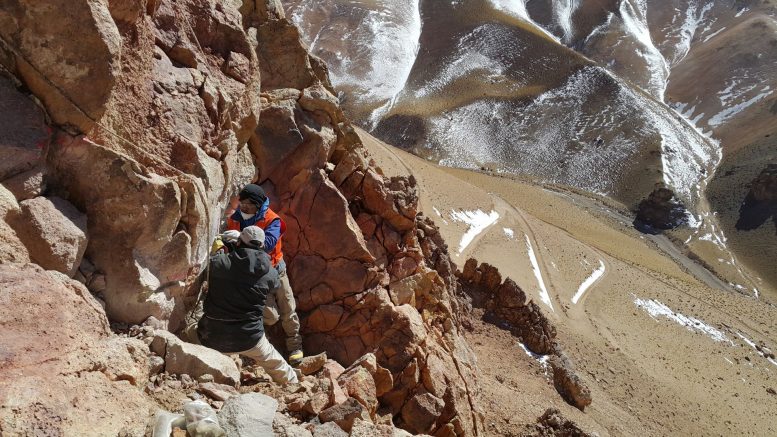
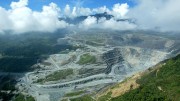
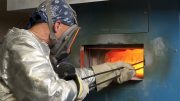
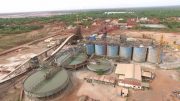
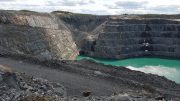
Be the first to comment on "Global Gold Snapshot: Eight players to watch"